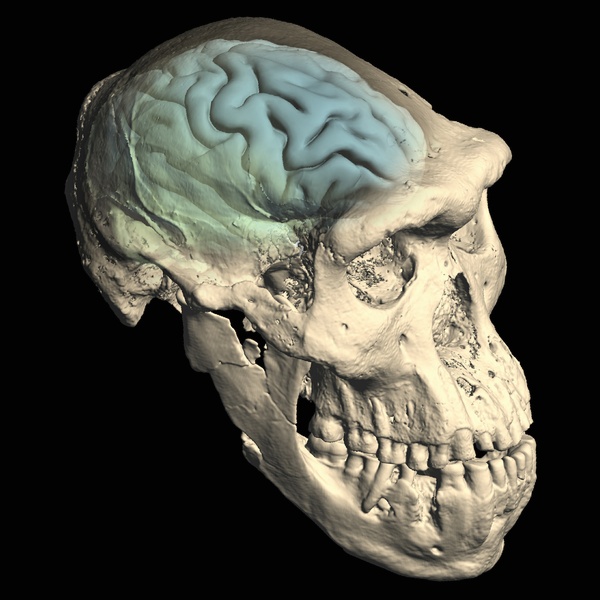That doesn't mean the larger brains evolved first.
The first populations of the genus Homo emerged in Africa about 2.5 million years ago and though they already walked upright, their brains were only about half the size of today's humans. These earliest Homo populations in Africa had primitive ape-like brains - just like their extinct ancestors, the australopithecines.

Skull of early Homo from Georgia. Image: M. Ponce de León and Ch. Zollikofer, UZH
CT scans have led anthropologists to speculate that modern brains emerged about 1.7MM years ago. Why is it more speculation than fact? The brains of our ancestors were not preserved as fossils so brain structures can only be inferred from impressions left by the folds and furrows on the inner surfaces of fossil skulls. To get their age range, the scholars used computed tomography to examine the skulls of Homo fossils that lived in Africa and Asia 1 to 2 million years ago. They then compared the fossil data with reference data from great apes and humans.
The first Homo populations outside Africa - in Dmanisi in what is now Georgia - had brains that were just as primitive as their African relatives. It follows, therefore, that the brains of early humans did not become particularly large or particularly modern until around 1.7 million years ago. However, these early humans were quite capable of making numerous tools, adapting to the new environmental conditions of Eurasia, developing animal food sources, and caring for group members in need of help.
During this period, the cultures in Africa became more complex and diverse, as evidenced by the discovery of various types of stone tools. The researchers think that biological and cultural evolution are probably interdependent. So the earliest forms of human language also developed during this period. Fossils found on Java provide evidence that the new populations were extremely successful: Shortly after their first appearance in Africa, they had already spread to Southeast Asia.
Citation: Marcia S. Ponce de León, Thibault Bienvenu, Assaf Marom, Silvano Engel, Paul Tafforeau, José Luis Alatorre Warren, David Lordkipanidze, Iwan Kurniawan, Delta Bayu Murti, Rusyad Adi Suriyanto, Toetik Koesbardiati, Christoph P. E. Zollikofer. The primitive brain of early Homo. Science. 8 April 2021. DOI: 10.1126/science.aaz0032





Comments